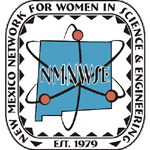 |
Los Alamos Women in Science Northern Chapter of the New Mexico Network for Women in Science and Engineering LAWIS SEMINAR SERIES https://archive.nmnwse.org/lawis/events co-sponsored by the Synergy Center, UNM-LA, LANL CPO, and the Bradbury Science Museum |

|
|
Dr. Harshini Mukundan, C-PCS, LANL |


 Map of UNM-LA campus showing building 6: http://www.la.unm.edu/about/map.html
Map of UNM-LA campus showing building 6: http://www.la.unm.edu/about/map.html
 | Members and Nonmembers Welcome - Open to the Public |  |
| If you would like to receive electronic LAWIS announcements, please send email to jtg@lanl.gov or see the listserver instructions at https://archive.nmnwse.org/lawis/list.html. You do not need to be a member of LAWIS. Volunteers to speak are welcome! |
